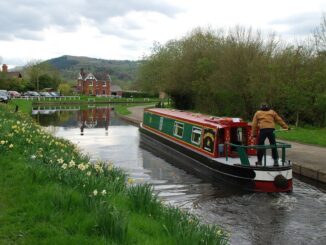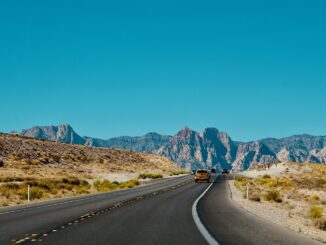Thinking about a walking holiday and some sunshine in 2018? Mark Nicholls joins a walking tour across rugged western Crete for a bit of both.
The shoreline of western Crete is as dramatic as it is beautiful; rugged mountains dip toes into the turquoise Aegean while waves scamper ashore on sand and pebble beaches. Slopes, roamed by sheep and goats, are covered with trees and shrubs while the air is filled with the scent of thyme set free from the tiny leaves as walkers’ boots brush past.
Inland, the terrain is cracked open with great fissures – gorges through which winter and spring rivers run through, carrying the snow melt from the White Mountains. Dry and boulder-strewn in the summer months, these gorges – including the Samaria Gorge which at 17km is Europe’s longest – are there to be navigated and explored.
Across this landscape, some of the Mediterranean’s finest walking paths plot an impressive course, edging along cliff edges, opening onto broad beaches, meandering through juniper copses, or following river bed routes through the deep gorges.
I joined a group from the Mistral Hotel, a small boutique hotel at Maleme near Chania specialising in solo holidays, for a week spent walking during the pleasant early October sunshine.
Our schedule was to take us high above the coast, into the depths of the Agia Irini Gorge, to the secluded village of Loutro overlooking the Libyan Sea and the shell-strewn beach of Elafonisi. With stretches of flat combined with ascents, descents, meandering through forest and scrambling over rocks, there was enough diversity and difficulty in the routes to keep everyone happy.
On a sunny Cretan morning, a light breeze and barely a cloud in the sky, we set off from the village of Nopigia to walk along the Rotherpou Peninsular. Waves lapped pebbles of a shore lined with mesembryanthemum and samphire as we left the road behind and rose along the coastal path clinging to the edge of the mountainside. Olive trees, the Carob with its chocolate-flavoured fruit, and pines stood the ground where goats and sheep grazed on the vegetation. As we climbed higher, the rugged, rocky path undulated as it rose to vantage points offering panoramic views across Kissamos Bay.
From there, we descended toward the village of Ravdouha, dipping in the sea for a cooling swim after the 8km hike and then savoured a taverna lunch: tzatziki, Greek salad, local wine, aubergines and courgette flowers in batter, fresh bread, mutton and sweetened pumpkin and Greek yogurt for dessert with an inevitable slug of raki.
Late afternoon, we returned to the Mistral to relax by the two pools and enjoy a refreshing beer at the al fresco bar. As is tradition at the Mistral, whether on a walking week or a general vacation, guests dine together sampling typical Cretan cuisine and wine.
During a Mistral sojourn, expect to dine on papoutsakia (aubergines stuffed with minced beef and vegetables with béchamel sauce), Cretan Boureki (layers of potato and courgette with Mizithra goat cheese and mint topped with pastry), gemista (peppers, tomato and courgettes stuffed with rice and herbs), moussaka (layers of aubergine, potato and minced beef) or stifado (tomato based casserole with chestnuts, shallots and chunks of beef, tuna or veal).
Of course, there will be Greek salads with tomato, cucumber, peppers, onions, black olives and Feta cheese. But also enjoy the flavour of Kalitsounia, the traditional pies with spinach and wild greens, or with Mizithra cheese, or marathopita, the famous Cretan dill pie.
Fresh produce is sourced from the hotel garden and the olive oil used in the cooking and on salads is from the family’s own olive groves. (They’ll give you a bottle to take home with you too!) One thing is certain – you’ll never go hungry on a Cretan diet, widely recognised as one of the healthiest cuisines on earth. And after a good walk, you’ll be ready for it too.
Our second walk took us into the Agia Irini Gorge (St Irene Gorge). The little sister of the Samaria, with a shallower descent, we reached the entrance on a drive from Maleme into the White Mountains.
For the 7km, we find ourselves at times on a dry river bed following a path through trees and across the boulders, or rising above it, walking through a path looking down on the rubble-strewn gorge. Much of the way – on the E4 European Walking Path – is shaded by the rich vegetation, pine and cypress trees, and an array of different herbs growing in the rocks.
For those planning to walk the Samaria Gorge, this is a pleasant introduction.
Our starting point for the next walk was Chora Sfakion, a small port familiar to Samaria walkers. The walk along coastal cliffs to the beautiful harbour village of Loutro took us along the southern coastline of Crete, close to Europe’s southernmost point.
From high above Chora Sfakion we zig-zag along a narrow path carved into the sea cliff, following the coastline for 7km, scrambling over rocks and boulders as the path dips down to sea level and then rises again before delivering us to Sweet Water Bay, a secluded cove with a few sunbeds and chance to dip in the sea and refresh before we press on towards Loutro.
Along the way we see caverns below, deep blue waters, a white-washed church, and follow the path through scrubland where the aroma of thyme drifts on the breeze. Bees find natural hives in this landscape, and it is here you get a sense of how Crete offers its wonderful thyme honey.
As we round a promontory, the white buildings of Loutro hove into view, cupping the small harbour. The path first skirts above the town and then dips in between apartments and tavernas to the waterfront. Our hard-earned lunch, typically Cretan, with a centrepiece of skewered, moist pork, roasted on a spit, is enthusiastically devoured.
Just time for a Greek coffee on the harbour front, and then it is the boat back to Chora Sfakion for the return to Maleme.
With 35 stylish rooms, and a spa for a massage or therapy to rejuvenate aching limbs and muscles, the Mistral has specialised in hosting solo guests for more than a quarter of a century, gaining renown as a place where like-minded people can relax by a pool, enjoy excursions to beaches at Elafonisi and Falasarna or the ambience of the wonderful Venetian harbour town of Chania.
The hotel also stages various activities or themed weeks, in addition to walking in the cooler months of May and October, such as weeks focussed on crafts and festivals.
With the “walking week”, however, there is also the weekend off to relax by the main front pool or more secluded rear pool, wander off to explore Maleme or nearby towns and coves or head into Chania, before embarking on our final, and longest walk at 12km.
Setting off from a beach near the lovely town of Paleochora, we plot a coastal course to the pink-tinged beached of Elafonisi.
Climbing away from the shoreline, the route tackles rocky paths and crags and up the cliff face before descending again to a remote beach where waves crash onto a shore of sand and volcanic rock. We pause for a picnic and then press on; this time through shrubland and a small wood, down into a dried-out river bed and into cypress and juniper trees for the final stretch to Elafonisi.
The pinkish hue of the beach, which comes from minute shell fragments, has been visible for some miles, luring us to the warm waters for a quick dip and laze on the sunbed before back to the Mistral for drinks and supper.
It is this combination that is so appealing; sea air and exercise, but with the comfort, cuisine and camaraderie of a boutique hotel for solo travellers to head back to every evening.
Walking Week Details and Prices
The Mistral Hotel walking weeks take place in May and October when the weather is fine and clear but the temperatures are more comfortable than the hotter months of June, July and August. In addition to the walks detailed, the routes are varied and can take in a range of other destinations across western Crete.
These include the 8km hike from the village of Anidri to Paleochora; 7km along Sirikari Gorge to the village of Polyrheneia and its archaeological site dating from 300BC; a 5km coastal walk to the fishing hamlet of Sfinari where the group joins other guests from the Mistral for a fish lunch; an easy 10km walk to Kalyves through olive and orange groves with a lunch stop at the village of Stylos; an 11km ramble through Imbros Gorge, which runs parallel to Samaria Gorge and was the main evacuation route for Allied soldiers after the Battle of Crete in 1941; a 5km walk from the 16th Century Gouverneto Monastery on the Akrotiri peninsular following a path originally traced by an 11th Century hermit who founded the island’s earliest monastery; a 5km stroll up to the restored village at Milia; and a two-hour walk through Deliana Gorge and a taverna lunch.
Mark Nicholls stayed at the Mistral Hotel, Maleme, during one of the popular walking weeks. Dates for the 2018 walking weeks are May 8-15 and October 2-9. Prices are from €1,108 to €1,209 and include Chania airport transfer, accommodation, seven breakfasts and six dinners (with wine and coffee), four guided walks with either taverna lunch or packed lunch and all transportation. The price does not include flights or travel insurance.
It’s advisable to bring walking shoes/boots, walking pole (optional), a water bottle, camera, rucksack, sun hat and sun cream. For more information please visit www.singlesincrete.com
Author Bio:
Mark Nicholls is an award-winning freelance travel writer and author, based in the UK and has written for a range of national titles, specialist magazines and international websites and operated as a war correspondent in locations such as Iraq and Afghanistan.
Photographs by Mark Nicholls













Be the first to comment